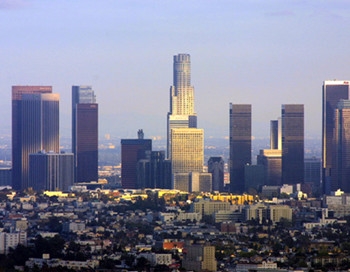
Downtown L.A., the ultimate modern American city, but Los Angeles skyscrapers are built over the graves of thousands of extinct Ice Age beasts.
洛杉磯市中心是美國(guó)最具現(xiàn)代化氣息的城市,但在洛杉磯高樓大廈的下面,卻是成千上萬(wàn)早已滅絕的冰河時(shí)代動(dòng)物的尸體。
Today all we have are memorials to these vanished animals, but imagine if they had survived into the present day, they would have had to adjust to a very human world.
如今,我們擁有的只不過(guò)是對(duì)于這些滅絕的動(dòng)物的記錄,但想象一下,如果它們今天還活著,它們就不得不想方設(shè)法融入人類的世界。
The reality is, mammoths never made it beyond the end of the last Ice Age, but many other creatures did. And over the past 14,000 years or so, they've had to adapt to an increasingly human landscape, a landscape of concrete and steel.
事實(shí)上,直到冰河時(shí)代的結(jié)束前,猛犸象都沒有融入人類的世界,但是有一些動(dòng)物卻成功了。而在過(guò)去的14000多年里,這些動(dòng)物也不得不一次又一次地適應(yīng)人類對(duì)其領(lǐng)地的擴(kuò)張,擴(kuò)張后建立的則是鋼筋和混凝土堆砌的高樓大廈。
In this program, we will travel back into the past to investigate why the giant beasts of North America became extinct and to find out how those animals that did survive have adapted to life in our modern world.
這本期節(jié)目里,我們將回到過(guò)去進(jìn)行一下調(diào)查,為什么這些北美洲的大型野獸們會(huì)滅絕,而我們同時(shí)也將尋找那些幸存下來(lái)的生物能夠融入人類現(xiàn)代生活的原因。
英文文本來(lái)自普特英語(yǔ),譯文屬可可原創(chuàng),僅供學(xué)習(xí)交流使用,未經(jīng)許可不得轉(zhuǎn)載。











